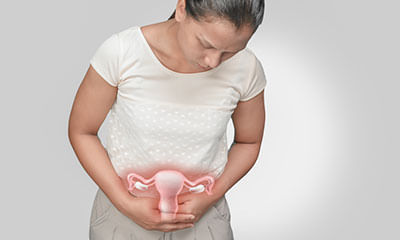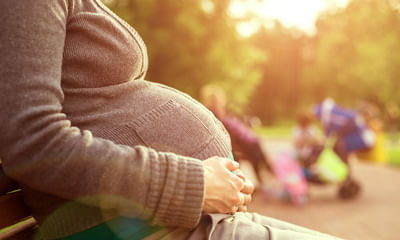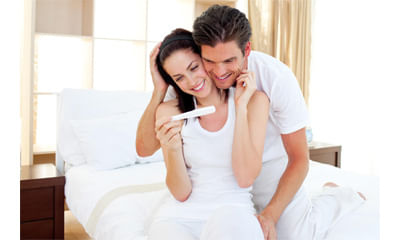Get the App
For Doctors
Login/Sign-up
Health Feed
Find Doctors
Health Packages
AllQ&AsTipsQuizzes
Evaluation of Infertility Health Feed
Last Updated: 4 years ago• Featured Tip
Share
Bookmark
Report
Oligospermia is a medical condition wherein the sperm concentration in the ejaculation is low. As per World Health Organisation, a low sperm count is defined as a count of less than 15 million sperms/millilitres and is associated with problems in conceiving because of a lesser count of sperms in the semen.
Azoospermia, on the other hand, is the male fertility issue when the sperm count is zero, i.e. there are no sperms in the semen. The cause of azoospermia may include the obstruction i...more
Azoospermia, on the other hand, is the male fertility issue when the sperm count is zero, i.e. there are no sperms in the semen. The cause of azoospermia may include the obstruction i...more
Health Query
Share
Bookmark
Report
Hi, lybrate user,
Obstruction of urethra can be dissolved without intervention of surgery with the help of homoeopathy, successfully.
Consult , privetly for a faster recovery, till, then take, homoeopathic medicine, underlying :
@ Acid nit 30ch -5 drops, thrice.
Avoid , junk food, alcohol, nicotine, oxlates and phosphates.
Tke, care.
Obstruction of urethra can be dissolved without intervention of surgery with the help of homoeopathy, successfully.
Consult , privetly for a faster recovery, till, then take, homoeopathic medicine, underlying :
@ Acid nit 30ch -5 drops, thrice.
Avoid , junk food, alcohol, nicotine, oxlates and phosphates.
Tke, care.
17 people found this helpful
Asked for male, 31 years old from Aligarh
Share
Bookmark
Report
1) pregnancy can occur only one day of the cycle that is ovulation day so unprotected sex around that day only important. As only one day in month nature should be given 12-24 trials (12 to 24 months) before couple need any active management by gynecologist or infertility specialist
2) for semen report take opinion of urogenital surgeon or infertility specialist dealing with males also.
2) for semen report take opinion of urogenital surgeon or infertility specialist dealing with males also.
17 people found this helpful
Asked for male, 28 years old from Raigarh
Share
Bookmark
Report
After a man ejaculates during sex, some semen may leak out of the vagina. This is completely normal and is not a sign that pregnancy cannot occur. The amount of semen that leaks out can vary from person to person and can depend on a variety of factors, such as the position during sex or how long the penis was inside the vagina.
Health Query
Share
Bookmark
Report
Asked for female, 29 years old from Kolkata
Share
Bookmark
Report
Urine routine fresh test and consult gynecologist or urologist
any couple desirous of pregnancy and not getting the same naturally must meet a gynecologist or infertility specialist accepting the fact that it needs many reports and different trials of treatment. This means the couple must have patience and go to one with whom they have trust to stick for a long time.
any couple desirous of pregnancy and not getting the same naturally must meet a gynecologist or infertility specialist accepting the fact that it needs many reports and different trials of treatment. This means the couple must have patience and go to one with whom they have trust to stick for a long time.
5 people found this helpful
Health Query
Share
Bookmark
Report
Asked for female, 31 years old from Guwahati
Share
Bookmark
Report
Asked for female, 26 years old from new delhi
Share
Bookmark
Report
Hi, lybrate user,
•Pregnancy depends upon dimension of overian cyst and uterine fibroid and it's proper medication.
•Fibroid and cyst can be dissolved , successfully by homoeopathy apart from the present administered medication.
•Consult, privetly for a faster recovery, till, then take, homoeopathic medicine, underlying :
@.Acid nit 30ch -5.droos, thrice.
•Avoid , junk food, alcohol and nicotine.
•Tke , care.
•Pregnancy depends upon dimension of overian cyst and uterine fibroid and it's proper medication.
•Fibroid and cyst can be dissolved , successfully by homoeopathy apart from the present administered medication.
•Consult, privetly for a faster recovery, till, then take, homoeopathic medicine, underlying :
@.Acid nit 30ch -5.droos, thrice.
•Avoid , junk food, alcohol and nicotine.
•Tke , care.
233 people found this helpful
Health Query
Share
Bookmark
Report
Pregnancy can occur only one day of the cycle that is ovulation day so unprotected sex around that day only important. As only one day in month nature should be given 12-24 trials (12 to 24 months) before couple need any active management by gynecologist or infertility specialist.
2 people found this helpful
Asked for female, 28 years old from Nashik
Share
Bookmark
Report
Book appointment with top doctors for Evaluation of Infertility treatment
View fees, clinic timings and reviews
Ask a free question
Get FREE multiple opinions from Doctors
posted anonymously













